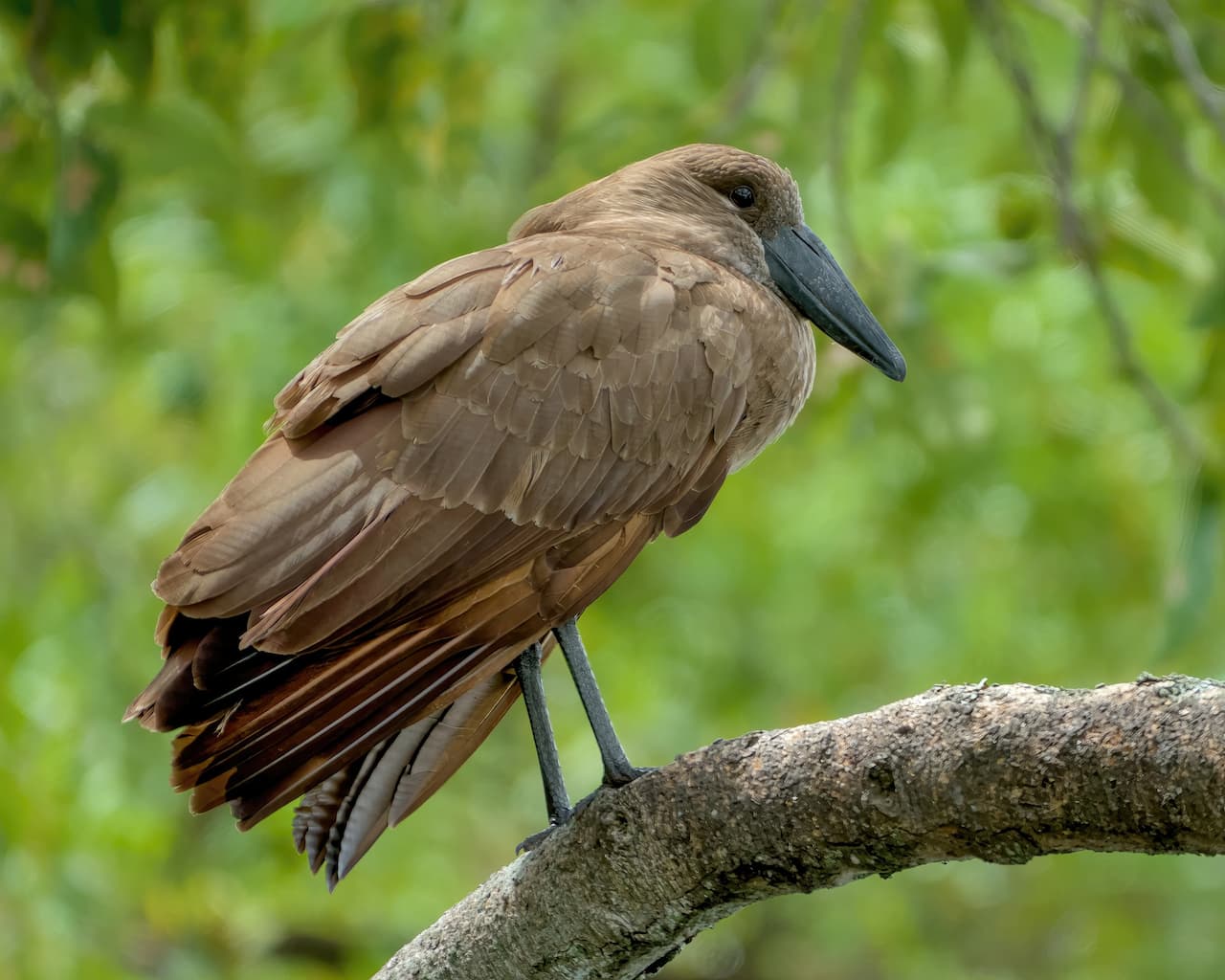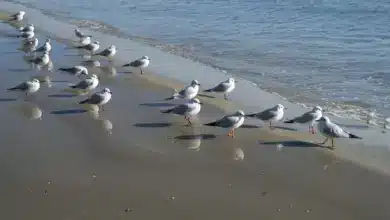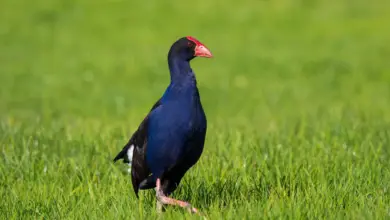They are moderately nomadic in normal years, but disperse widely in times of drought. Significant numbers reach as far afield as New Guinea, New Zealand, and the islands of the Pacific, where they can remain for some time, even breeding for a season or two.
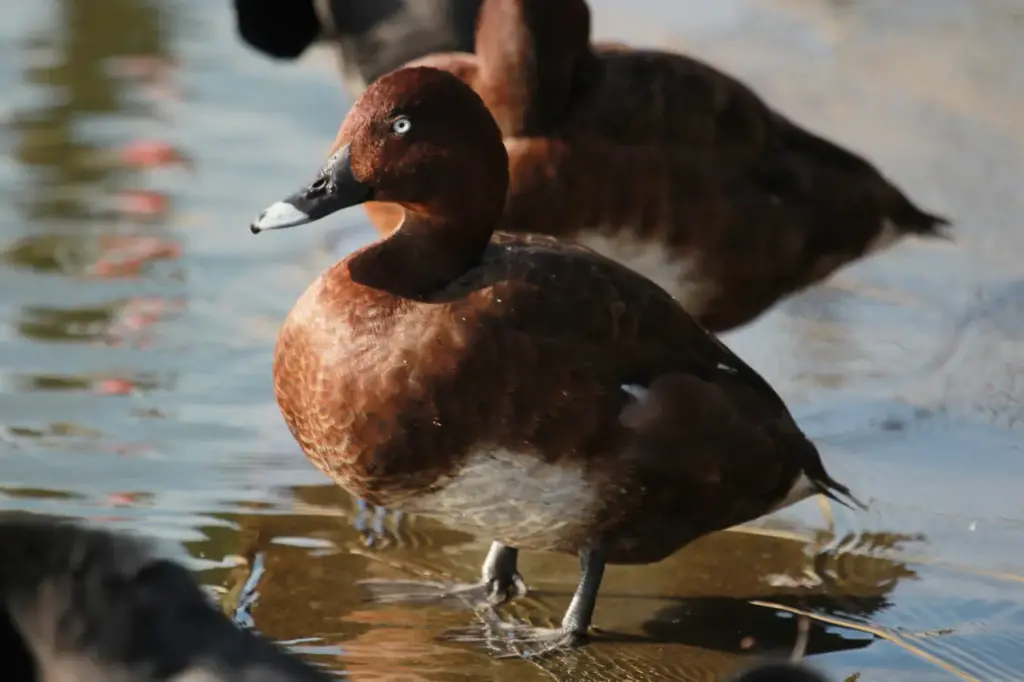
Description
Hardhead Ducks are small by duck standards, usually not much more than 45 cm long but reaching 60 cm sometimes, and noticeably more rounded in overall form than most ducks. Both male and female are a fairly uniform chocolate-brown above, with rufous flanks and white undersides (which are often not visible if the duck is in the water). The trailing edges and almost the entire underside of the wings are white. In the male, the eyes are a striking white (Hardheads sometimes used to be known as White-eyed Ducks), in the female, brown.
Diet / Feeding
Like the other members of the pochard group, Hardheads feed by diving deeply, often staying submerged for as long as a minute at a time. They slip under the water with barely a ripple, simply lowering their heads and thrusting with their powerful webbed feet. They eat a broad range of small aquatic creatures, and supplement this with water weeds.
Habitat
Hardhead Ducks prefer larger lakes, swamps and rivers with deep, still water, but are often seen in smaller streams, flooded grasslands, and shallow pools. As a general rule, they avoid coastal waters. They rarely come to land and never perch in trees.
Status
Widespread throughout its large range, the Hardhead is evaluated as Least Concern on the IUCN Red List of Threatened Species.
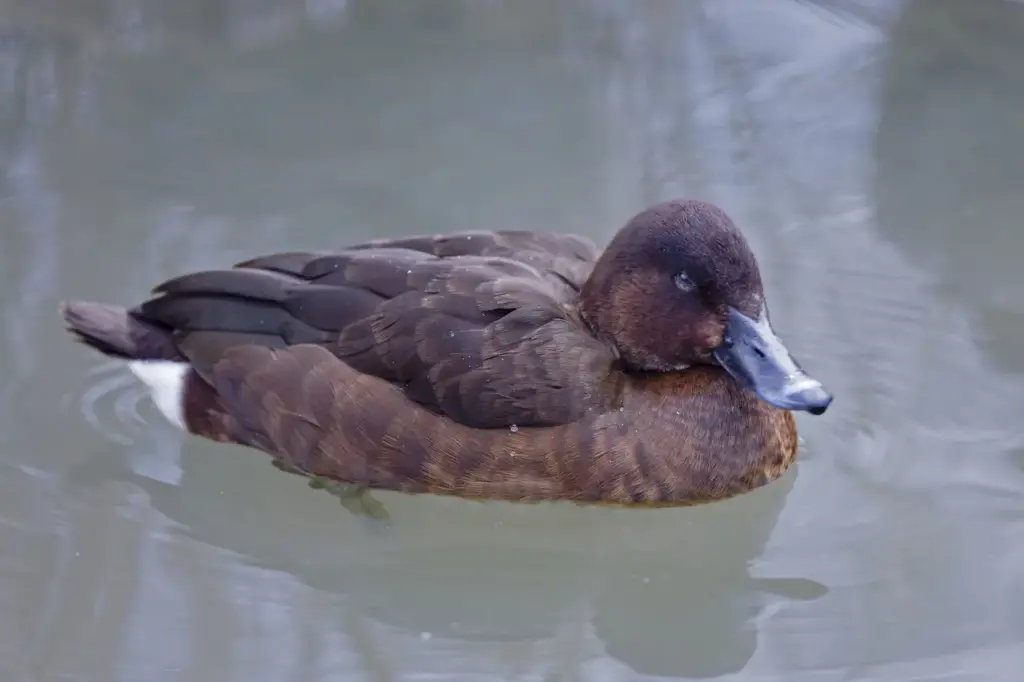
References
- BirdLife International (2004). Aythya australis. 2006. IUCN Red List of Threatened Species. IUCN 2006. Retrieved on 12 May 2006. Database entry includes justification for why this species is of least concern
Copyright: Wikipedia. This article is licensed under the GNU Free Documentation License. It uses material from Wikipedia.org … Additional information and photos added by Avianweb.
Diet / Feeding:
Hardhead Ducks feed on larvae and pupae usually found under rocks, aquatic animals, plant material, seeds, small fish, snails, and crabs.
Instead of “teeth,” ducks have serrations (saw-like edges) on their bills that allow them to filter food out of the water.
Captive birds are often fed commercially prepared duck food pellets – if there are insufficient natural resources available to sustain them. As they feed on insects, they are very useful in ridding gardens or lawns of harmful bugs.
Feeding Ducks …
We all enjoy ducks and many of us offer them food to encourage them to come over and stay around – and it works! Who doesn’t like an easy meal!
However, the foods that we traditionally feed them at local ponds are utterly unsuitable for them and are likely to cause health problems down the road. Also, there may be local laws against feeding this species of bird – so it’s best to check on that rather than facing consequences at a later stage.
- Foods that can be fed to Ducks, Geese and Swans to survive cold winters and remain healthy when food is scarce in their environment.
Please note that feeding ducks and geese makes them dependent on humans for food, which can result in starvation and possibly death when those feedings stop. If you decide to feed them, please limit the quantity to make sure that they maintain their natural ability to forage for food themselves – providing, of course, that natural food sources are available.
Please Note: The articles or images on this page are the sole property of the authors or photographers. Please contact them directly with respect to any copyright or licensing questions. Thank you.

